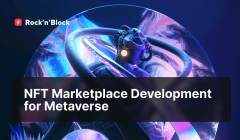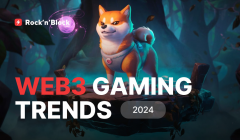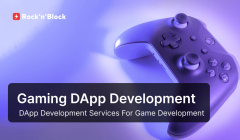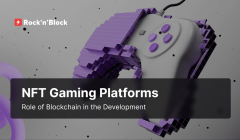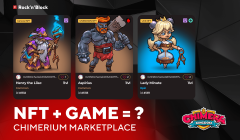Key Trends and Mechanics of P2E Game Development in 2024
03 May 2024The Play-to-Earn (P2E) concept is a major focus in the gaming industry. It promises a new era of interactive entertainment that utilizes blockchain technology and decentralized finance principles. This article will compare P2E models with traditional gaming models, explore tokenomics and incentive structures, and highlight the top 10 trends that are shaping P2E game development in 2024. Let’s explore the future of gaming and navigate the constantly evolving world of P2E gaming, from blockchain integration to community-driven economies.
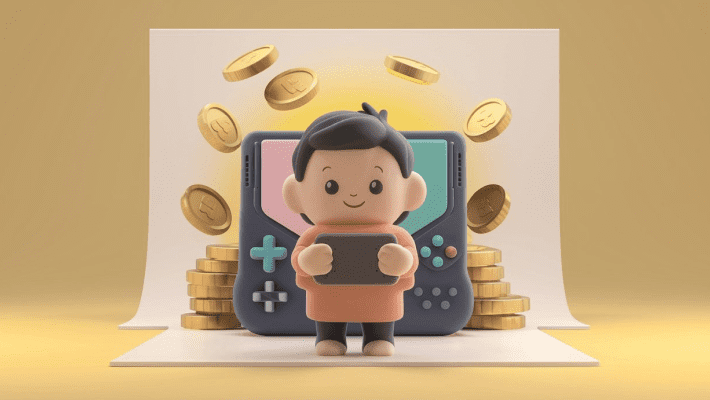
Understanding P2E Game Development
P2E projects development is a departure from traditional gaming models as it introduces economic incentives for players. Essentially, players engage in gameplay activities, such as completing quests, participating in battles, or acquiring virtual assets, with the opportunity to earn real-world rewards. These rewards are often in the form of cryptocurrencies, non-fungible tokens (NFTs), or other digital assets, which hold the real value outside of the game environment.
P2E game development relies on blockchain technology to ensure transparency, security, and immutability of in-game transactions. Decentralized networks are used to foster trust among players and developers. Smart contracts govern the distribution of rewards, ensuring fair and automated payouts based on predefined rules and conditions. NFTs play a pivotal role in P2E game development, offering players a unique opportunity to own and trade exclusive digital assets within virtual environments. Additionally, NFTs allow players to possess exclusive digital assets, such as uncommon items, characters, or virtual property, that can be traded or used on various gaming platforms. At the same time, NFTs provide owners with new monetization opportunities, as they can create and sell limited-edition digital items or offer exclusive rewards to players through NFT-based mechanisms, further enhancing the economic sustainability and attractiveness of P2E game ecosystems.
Traditional Gaming Models vs. P2E Models
The inception of P2E game development represents a significant change in the gaming industry, disrupting traditional business models and redefining the relationship between gamers and developers.
Traditional Gaming Models
The gaming industry has traditionally relied on centralized gaming models where game publishers and developers have complete control over game assets, economies, and monetization strategies. Players usually pay for games upfront or subscribe to access them, with additional revenue streams coming from in-game purchases, downloadable content (DLC), microtransactions and in-app ads.
The traditional gaming experience aims to provide immersive gameplay, captivating narratives, and engaging mechanics to entertain players. Success in this model often depends on game design, marketing efforts, and the ability to resonate with target audiences. However, the monetization structure often prioritizes publisher profitability, which can lead to concerns about pay-to-win mechanics, loot boxes, and exploitative practices that detract from the overall player experience.
P2E Models
In contrast, P2E game development is a departure from traditional gaming models. It introduces decentralized, player-centric ecosystems where players can earn real-world rewards for their participation and contributions. P2E games utilize blockchain technology and decentralized finance (DeFi) principles to create transparent, trustless environments where in-game assets hold intrinsic value and can be freely traded by players.
P2E models incentivize player engagement and gaming skill building by rewarding players with cryptocurrencies, NFTs, or other digital assets for their in-game achievements. Rewards can be earned by completing quests, participating in battles, or contributing to the overall growth and sustainability of the game universe. This approach in perspective allows players to have a stake in the games they play, creating a sense of ownership, community, and financial empowerment.
Comparing the Two Models
1. Ownership and Control: Traditional gaming models are characterized by centralized control, where game owners dictate the rules, economies, and ownership of in-game assets. P2E game development prioritizes decentralization and player ownership, allowing players to retain full control over their digital assets and transactions.
2. Monetization and Incentives: While traditional gaming models rely on upfront purchases, subscriptions, and in-game purchases for revenue generation, P2E models introduce novel monetization strategies that reward players directly for their time, skills, and contributions.
3. Player Engagement and Retention: P2E game development incentivizes active participation and community building, leading to higher levels of player engagement and retention compared to traditional gaming models. By offering tangible rewards for gameplay achievements, P2E games create stronger incentives for players to invest time and effort into the gaming experience.
Today, many industries are experiencing significant changes due to the rapid blockchain technology development. The gaming industry is no exception, so the clash between traditional gaming models and P2E models reflects broader trends towards decentralization, player empowerment, and economic innovation. Although traditional gaming models are still common, the emergence of P2E game development indicates a transformative shift towards more inclusive, equitable, and player-centric gaming experiences. It remains to be seen whether these two paradigms will coexist harmoniously or compete for dominance. However, one thing is clear: the emergence of P2E models is reshaping the future of gaming, unlocking new possibilities and opportunities for both players and developers.
Key Mechanics of P2E Games
The connection between tokenomics and incentive structures forms the backbone of innovative gaming experiences. In virtual worlds where digital assets hold real-world value, it is important to understand the mechanics that underpin these ecosystems. Let's delve into the mechanics of P2E game development, outlining the dynamics of tokenomics and incentive structures that drive player engagement and economic sustainability.
Tokenomics of P2E Gaming
At the heart of P2E game development lies the concept of tokenomics – the concept of how tokens function and interact with various stakeholders within a digital ecosystem. In P2E games, tokens serve as the lifeblood of the economy, representing digital assets that hold intrinsic value and can be exchanged, traded, or used within the game environment.
Blockchain technology is essential for tokenomics development in P2E games. It allows P2E game developers to create transparent and immutable systems for issuing, distributing, and circulating tokens through smart contracts. Smart contracts automate key processes such as reward distribution, asset ownership verification, and transaction validation, ensuring trust and security among players.
Tokens in P2E games often serve multiple purposes, including:
1. In-Game Currency: Tokens are the main currency used in the game. They can be used to buy items, unlock features, or trade with other players.
2. Governance Rights: Some tokens provide governance rights, allowing players to participate in decision-making processes related to game development, updates, or community initiatives.
3. Utility and Access: Certain tokens grant access to exclusive content, special events, or premium features within the game, providing incentives for players to acquire and hold them.
4. Staking and Rewards: Players can participate in staking: they stake tokens to earn rewards, participate in liquidity mining programs, or contribute to the security and stability of the underlying blockchain network.
By designing robust tokenomic models, P2E game developers create dynamic and self-sustaining economies that incentivize active participation, foster community engagement, and drive long-term value creation.
Motivating Player Engagement by Incentive Structures
In P2E game development, game designers create incentive structures to motivate players to engage with the game, contribute to its growth, and earn rewards. These structures use principles from behavioral economics to create engaging gameplay experiences that appeal to a wide range of players.
Key components of incentive structures in P2E games include:
1. Quet-to-Earn: Players are incentivized to complete in-game tasks, quests, or challenges, with rewards offered for achieving specific milestones or objectives. These rewards may include tokens, rare items, or exclusive privileges within the game.
2. Learn-to-Earn: Learn-to-earn is an educational model where individuals earn rewards or incentives by participating in learning activities and acquiring new skills or knowledge. It incentivizes continuous learning and skill development by offering tangible rewards, such as monetary compensation, digital assets, or career advancement opportunities, based on the individual's learning achievements.
3. Move-to-Earn: Move-to-earn games incentivize physical activity by offering rewards or incentives based on the player's physical movements and exercise routines. Participants engage in various activities, such as walking, running, or completing fitness challenges, to earn rewards, which can include digital assets, cryptocurrency, or other tangible benefits.
4. Compete-to-Earn: Individuals earn rewards by participating in competitive gaming tournaments or events. Rewards are based on performance, with top performers receiving cash prizes, digital assets, or other incentives.
5. Trade-to-Earn: P2E game development encourages players to actively participate in the economy by buying and selling assets, providing liquidity to decentralized exchanges, or staking tokens to earn passive income. These economic activities not only drive demand for tokens but also contribute to the overall liquidity and stability of the game economy.
6. Skill-Based Competition: P2E games often incorporate competitive elements such as player versus player (PvP) battles, tournaments, or leaderboards, where players can showcase their skills and compete for rewards and recognition.
7. Community Involvement: Community-driven initiatives, such as guilds, alliances, or collaborative projects, incentivize players to collaborate, share knowledge, and support each other within the game community. Rewards may be distributed based on collective achievements or contributions to community goals.
By aligning incentives with player motivations and behaviors, P2E game developers create immersive and rewarding gameplay experiences that captivate players and foster long-term engagement.
Top 10 Trends in P2E Game Development
As technology advances and player preferences evolve, several trends are shaping the future of P2E game development, offering exciting opportunities for players, developers, and investors.
1. Real-World Skill Development
P2E games are increasingly incorporating mechanics that allow players to develop real-world skills while earning rewards. Whether it's learning a new language, honing problem-solving abilities, or mastering financial literacy, these games offer tangible benefits beyond entertainment, providing players with valuable skills that can be applied in their personal or professional lives.
2. Metaverse Integration
One of the most prominent trends in P2E game development is the integration of metaverse concepts, where virtual worlds seamlessly blend with real-life experiences. Pioneered by platforms like Decentraland and The Sandbox, metaverse integration allows players to own virtual land, build interactive experiences, and monetize their creations using blockchain technology. This trend marks the beginning of a new era of immersive and interconnected gaming universes. In these virtual environments, players can socialize, explore, and transact, which mirrors the complexities of the real world.
Explore more use cases of the Metaverse integration in our guide: Uncovering Metaverse Software Development in 2024!
3. Play-to-Own Assets
Building upon the play-to-earn model, some P2E games are introducing play-to-own mechanics where players can permanently own and trade in-game assets earned through gameplay. By tokenizing virtual assets as NFTs on blockchain platforms, developers grant players true ownership and scarcity of digital items, unlocking new possibilities for ownership, investment, and value creation within virtual worlds.
4. Sustainable Economies
Ensuring the long-term sustainability of in-game economies is a pressing concern for P2E game developers. To address this challenge, developers are exploring innovative approaches such as algorithmic tokenomics, decentralized governance, and economic simulations to create robust and resilient gaming ecosystems. By balancing supply and demand dynamics, mitigating inflationary pressures, and fostering healthy economic incentives, developers can create sustainable economies that promote fairness, stability, and growth for players and investors alike.
5. New Monetization Strategies
In the realm of P2E game development, monetization techniques play a crucial role in engaging players and driving revenue. By offering free daily rewards, introductory bundles, and high-value battle passes, developers emotionally engage players, encouraging them to spend both time and money on the game. Moreover, randomness is a powerful tool in monetization, as it adds excitement and unpredictability to gameplay. Features like loot boxes and gacha systems entice players to make purchases in pursuit of rare or valuable items. Successful P2E games strike a balance between appealing to high-spending players and catering to a broader base of casual players, ensuring a sustainable revenue stream while maintaining player engagement and satisfaction.
6. NFT Integration
NFT development has revolutionized the concept of digital ownership, allowing players to own unique, verifiable assets within P2E games. From rare items and collectibles to virtual real estate and in-game characters, NFT integration enables players to truly own and monetize their digital assets, creating new avenues for creativity, investment, and self-expression. This trend not only enhances player engagement and retention but also introduces exciting opportunities for artists, creators, and developers to monetize their creations.
7. Social Gaming Experiences
Social gaming experiences are integral to the modern gaming landscape, offering players the opportunity to connect, collaborate, and compete with friends and other players in virtual environments. These experiences are important because they foster a sense of community and belonging, providing players with avenues for social interaction, communication, and teamwork. Whether it's joining forces in cooperative missions, facing off in competitive matches, or simply hanging out in virtual spaces, social gaming experiences enhance the overall enjoyment and engagement of players, making gaming a more enriching and fulfilling experience.
8. Play-to-Earn Education
In addition to the play-to-earn model, some P2E games are exploring play-to-learn (P2L) models where players can acquire valuable knowledge, skills, and experiences through gameplay. By integrating educational content, quizzes, and interactive tutorials, developers create engaging learning experiences that incentivize player participation and achievement while earning rewards. P2L games bridge the gap between entertainment and education, offering players a holistic learning environment that combines fun and learning in immersive virtual worlds.
9. Dynamic Narrative Generation
Advancements in artificial intelligence and procedural generation techniques are enabling developers to create P2E games with dynamic, personalized narratives. By analyzing player preferences, behaviors, and choices in real-time, these games can dynamically generate storylines, quests, and characters that adapt to each player's unique playstyle and preferences. This trend enhances player immersion, replayability, and emotional investment, creating truly personalized gaming experiences that evolve and unfold in response to player actions and decisions.
10. Dynamic Player-Driven Economies
Some P2E games implement dynamic player-driven economies where player actions directly impact the game's economic landscape. Players can shape supply, demand, and pricing within the game world through mechanisms such as player-run marketplaces, resource extraction, and crafting systems. EVE Online is a prominent example of this trend, with a complex economy based on supply and demand. Players create everything in the game, including ships, modules, raw materials, and finished goods. The player-driven economy determines the prices of goods, fostering agency and entrepreneurship while introducing complex economic dynamics that mirror real-world market forces. This creates immersive and dynamic gaming experiences.
Read more about Web3 Game Development Trends in 2024!
Conclusion
Staying updated on the latest trends and mechanics in P2E game development is crucial as the gaming industry is rapidly growing. Understanding how blockchain integration, tokenomics, and emerging trends shape the gaming landscape can help developers to unlock new opportunities and innovations. To create immersive, engaging, and sustainable gaming experiences that captivate players and push the boundaries of what is possible in virtual worlds, it will be essential to embrace the trends as we look to the future of gaming in 2024 and beyond.
Rock'n'Block is a P2E game development company that is proud of in-depth knowledge of current trends and the ability to foresee future ones. Contact us today to leverage the power of GameFi development and ensure your project remains competitive in this dynamic industry.
We ❤️ Development
Follow us on social media to receive the hottest blockchain development updates
Twitter ⚡️Telegram⚡️LinkedIn⚡️Facebook

